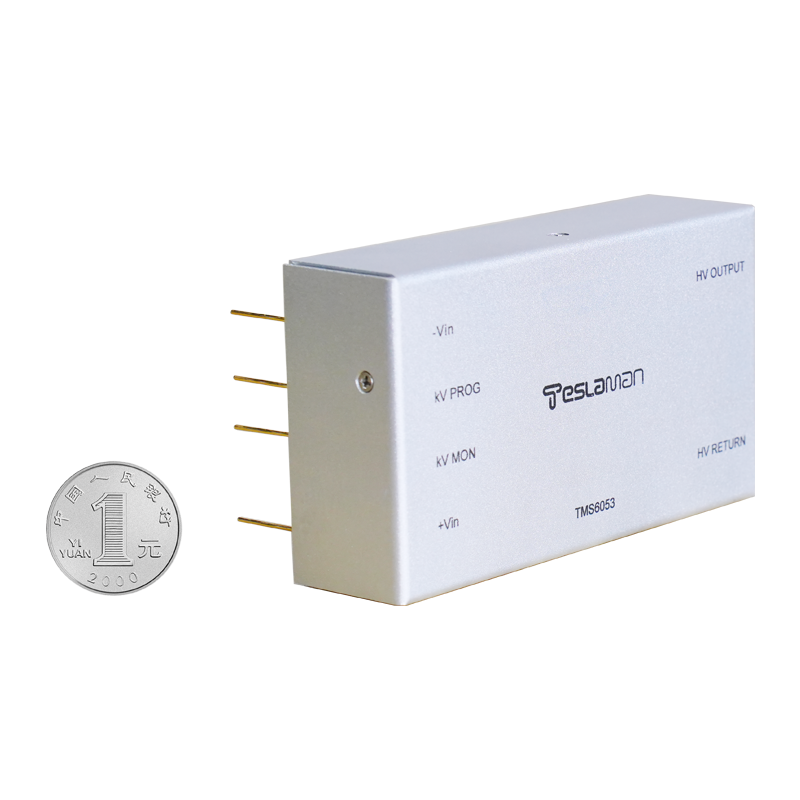Application of High-Voltage Pulsed Power Supplies in Biomedical Imaging
In the field of biomedical imaging, high-precision energy regulation technology has always been a core driver for breakthroughs in imaging resolution and functionality. As a special power supply capable of generating nanosecond-to-microsecond pulse widths and kilovolt-level peak voltages, high-voltage pulsed power supplies (HVPS) are becoming a key technology to improve biomedical imaging quality and expand application scenarios, thanks to their unique transient energy output characteristics. This article discusses the innovative value of HVPS from three dimensions: technical principles, application scenarios, and development trends.
1. Technical Principles and Mechanisms for Imaging Performance Enhancement
The core advantage of HVPS lies in its precise control over electric field parameters. By adjusting the pulse amplitude (typically 1–100 kV), width (10 ns–10 μs), and repetition frequency (1 Hz–100 kHz), non-thermal electrophysiological responses can be induced in biological tissues. For example, in electrical impedance tomography (EIT), traditional DC excitation is prone to interference from tissue polarization effects. Nanosecond-level high-voltage pulses can suppress charge accumulation at the electrode-tissue interface, reducing background noise by 30–50% and increasing imaging contrast to over 20 dB. This transient electric field can also dynamically modulate cell membrane permeability, providing a new pathway to enhance the loading efficiency of ion probes in fluorescence imaging. Experimental data show that after treatment with an electric field of 80 kV/cm amplitude and 50 ns width, the uptake rate of calcein by cell membranes increases fourfold.
2. Typical Application Scenarios and Technical Breakthroughs
1. Spatiotemporal Control in Super-Resolution Fluorescence Imaging
In stimulated emission depletion (STED) microscopy, HVPS generates picosecond-level transient suppression beams to confine the fluorescence emission region within 20 nm. The key technology involves compressing the pulse rise time to below 50 ps and using second harmonic generation modules for efficient spectral conversion in the near-infrared band (750–1000 nm). This combination increases the imaging frame rate of synaptic vesicle dynamics in neurons to 1000 fps, two orders of magnitude higher than traditional continuous-light excitation.
2. Energy Optimization in Photoacoustic Imaging
In photoacoustic tomography (PAT), the collaborative operation of HVPS and solid-state lasers enables dynamic tuning of the light-acoustic conversion efficiency. Reducing the pulse width from 100 ns to 20 ns improves the spatial resolution of thermoelastic expansion in tissues from 500 μm to 150 μm. By adjusting the repetition frequency (1–100 Hz), an optimal operating curve can be established between single-pulse energy (1–100 mJ) and average power (1–10 W). This flexibility allows three-dimensional reconstruction of tumor microvasculature with diameters smaller than 100 μm, offering new tools for early cancer diagnosis.
3. Synergistic Excitation in Multimodal Imaging
In dual-modal systems integrating electrical impedance and ultrasound imaging, HVPS enables seamless switching between modalities through time-division multiplexing. Within a 50-μs pulse interval, 100-kV electric field excitation and 5-MHz ultrasound signal acquisition can be completed with nanosecond-level timing synchronization. This breakthrough enables joint reconstruction of soft tissue conductivity distributions and acoustic impedance characteristics, achieving a positioning error of less than 1 mm in breast tumor detection.
3. Challenges and Development Trends
Current technical bottlenecks focus on pulse stability and system integration. The amplitude fluctuation of nanosecond-level pulses must be controlled within ±1%, while the temperature drift coefficient of traditional LC oscillating circuits (approximately 200 ppm/℃) can no longer meet requirements. The combination of new solid-state switching devices (such as SiC MOSFETs) and digital feedback control algorithms has become a research hotspot. Additionally, miniaturization demands are driving HVPS toward system-on-a-chip (SoC) designs. Integrated solutions based on thin-film capacitors (dielectric constant >1000) and micro-electro-mechanical systems (MEMS) switches have reduced power supply volume to below 10 cm³, laying the foundation for clinical applications in portable imaging devices.
In the future, HVPS technology will deeply integrate with artificial intelligence, using machine learning algorithms to dynamically optimize pulse parameter combinations. For example, in photoacoustic imaging, a convolutional neural network (CNN)-based pulse waveform prediction model can automatically adjust 12 electric field parameters based on real-time imaging feedback, reducing imaging time by 40% while maintaining resolution. This intelligent trend will drive biomedical imaging from traditional fixed-parameter modes to adaptive-optimization precision modes.
With their non-invasive energy regulation capabilities for biological tissues, high-voltage pulsed power supplies are reshaping the technological boundaries of biomedical imaging. Through cross-innovations in ultrafast electronics, micro-nano manufacturing, and intelligent algorithms, this technology is expected to open up broader application spaces in frontier fields such as single-cell analysis and functional metabolic imaging, providing critical technical support for the development of precision medicine.




















